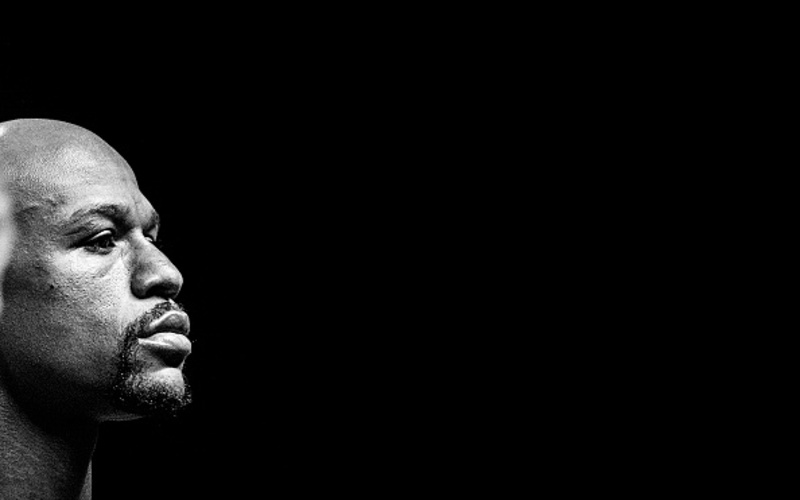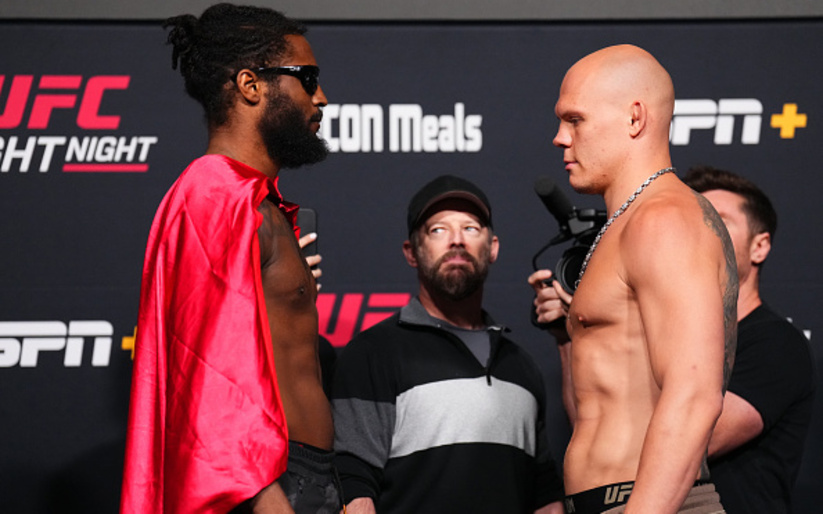In our last installment, we looked at the offensive variety of Floyd Mayweather. Today we’ll break down his superb ring generalship.
The greatest fighters in all combat sports have one thing in common – they possess a seemingly preternatural sense of where they are at all times on the fighting surface, as well as the knowledge of where they want to be and how to get there. Ring generalship separates the good from the great. How many fighters have we seen falter at the elite level because they couldn’t effectively cut the ring, or lacked the footwork to stay on the outside?
Floyd Mayweather exemplifies the concept of ring generalship. He remains aware of his position in the ring at all times and is constantly working to increase his positional advantage. Though Mayweather’s craft is deep, he knows that winning every battle against an elite opponent is simply impossible, and thus possesses a wealth of tactics for getting out of dangerous positions and turning them into advantageous ones.
Footwork
As an outfighter, Mayweather prefers to operate primarily at long range, outside of his opponent’s punching distance. In part 1 of The Floyd Mayweather Style Guide, we examined why attempting to draw him in and counter is a fool’s errand, so that leaves his opponents with the strategy of pressuring. The idea is to move forward while cutting off Mayweather’s escape routes, eventually trapping him in a corner where he has no more distance to exploit.
Obviously, Mayweather is aware of this and has crafted his game around defusing pressure. In order to cut the ring, his opponents must move forward while also tracking his lateral movement. By rapidly changing directions and feinting direction changes, Mayweather will trick his opponents into committing to a side that he’s no longer moving towards. Once they plant their feet, he can sneak out the other side.
There’s a few things to note here. First, Mayweather retreats in a bladed stance, but squares up as he’s within a step of the ropes (there’s that preternatural sense of ring position). Squaring his stance gives him the ability to push off toward either side and facilitates lateral movement. As Mayweather feints a move to his left, Marcos Maidana begins following him and is forced to over-compensate as Mayweather hop-steps toward the other side. Mayweather hops to his left again and Maidana is forced to step out with his rear leg, squaring him up and removing his ability to force Mayweather backwards. Maidana steps back to re-align his stance and pivot into Mayweather, but by the time he does Mayweather has already escaped the ropes and is ready to circle back off when Maidana follows.
Distance Control
Despite Mayweather’s incredible speed and craft in changing directions, merely circling the perimeter of the ring will never be enough to throw off an effective pressure fighter. This is because the man occupying the center of the ring has a much shorter path to travel in order to cut his opponent off. As I explored in greater depth in an article on the footwork of Alexander Gustafsson, an outfighter must be willing to close distance at some point to lessen the distance he needs to travel off the ropes (or cage).
Mayweather is as effective in closing distance as he is in creating it. He clinches early and often. He’ll use the clinch as a tool to close the window on an opponent’s counter after landing a punch or to take himself out of dangerous situations.
Here he leans into the ropes, swatting at Andre Berto‘s jab in an attempt to draw out a more committed punch, and ducks into the clinch as soon as Berto commits with his right hand. Mayweather makes sure to get the underhook on his left side and uses it to turn Berto onto the ropes before the referee breaks the clinch – a crafty, veteran move that puts him back in the center of the ring.
When an opponent has Mayweather stuck on the ropes, he’ll raise his lead shoulder, bring his right arm up to cover against the lead hand, and lean back on the ropes to create distance between his head and the power hand. He’ll alternate pulling his head back and dipping it down toward his right side in order to draw out commitment from his opponent, and use their punch as an opportunity to take his back off the ropes.
Mayweather waits for a committed punch before rolling under it. As he lowers his head, he whips his rear foot around and pivots 180 degrees on his lead foot, switching places with his opponent and putting his back to the center of the ring.
His stance is another tool he uses to draw opponents into committing:
Here Mayweather steps across himself and squares his stance to convince Berto that he’s in position to be hit, only to roll his head out and sidestep into the corner when Berto steps in with punches. Berto commits to a lead hook as he follows Mayweather into the corner, giving Mayweather the opportunity to slip out beneath his elbow.
Dirty Tricks
Ever the crafty veteran, Mayweather possesses a number of less-than-legal tactics to keep his opponents at bay.
Mayweather is happy to simply shove his opponents away when he needs to create distance. This also breaks their balance and exposes them to follow-up strikes, but Mayweather is usually content with moving off the ropes. Peter Aerts of K-1 fame was known for using pushes to set up his head kicks. Technically, pushing is a foul in boxing, and Mayweather was warned multiple times in the first Jose Luis Castillo fight, but if officials refuse to penalize fouls with a point deduction they may as well be giving permission.
One universal principle in combat sports is that where the head goes, the body follows. In Brazilian Jiu Jitsu, this principle is made manifest in a stern crossface. In boxing, many of the techniques that exploit this adage lie in the gray areas of legality. Mayweather has never been one to shy away from the gray areas however, and he takes every opportunity to control his opponent’s head.
When he can get his man dipping down, he likes to pass them underneath his armpit or press their head down with a forearm to land a straight when they pop up. Here he is using it against Manny Pacquiao to take his back off the ropes. Mayweather’s use of frames and head control will be explored in-depth in our next installment.
Offensive Applications
So far we’ve explored the ways Mayweather uses his opponent’s offense to his advantage in navigating the ring, but his own offense is integral to his ring generalship as well. Just as Mayweather seeks to draw commitment when he’s on the defensive, he also looks to make his opponent commit when he’s attacking. Non-committal throwaway punches force the opponent to make a defensive reaction, and this reaction gives Mayweather an opportunity to exploit.
Mayweather uses his jab to get Berto transferring weight over a hip as he slips. With his weight committed to one hip, he’s not in position to follow immediately and Mayweather quickly hop-steps or pivots out. Often you’ll see fighters less experienced with pressuring slip onto their lead hip and pivot on that same foot when they have their man on the ropes, opening up space to the open side (as Berto does here). Mayweather likes to feed his opponents jabs in order to encourage this.
Mayweather is excellent at using his punches to angle out. As his opponents are distracted by his work upstairs, he’ll re-position his lower body to allow him to quickly escape. His check hook is the perfect example of this:
Note the footwork as he throws the hook. Instead of the traditional pivot, Mayweather steps his lead foot back diagonally, putting him into southpaw. This allows him to quickly sneak out the side while his opponent is still rushing in.
He’ll also use the check hook as more of a pushing shot to control his opponent’s head while he moves away:
Here he cuffs Gurrero on the neck with his forearm and gives him an extra little shove while pivoting off. This hook is thrown with more of a sweeping action and loses the slapping power of the one he used to drop Ricky Hatton, but it serves to break his opponent’s balance and give him an out along the ropes.
Mayweather uses his rear hook in a similar manner. He circles to the inside to encourage Castillo to walk onto it and pivots 90 degrees as he throws it, allowing him to back-peddle out.
Mayweather also likes to use the dart to escape the ropes. He brings his rear foot forward as he throws the straight, squaring his stance to open up lateral movement, and pushes off the rear foot to hop-step out the side while Robert Guerrero is still looking to counter.
As impressive as Mayweather is in the ring, his ability to manipulate its surface isn’t limited to the in-fight action. He’s known for insisting on a large ring that gives him more room to move around – and his opponents more distance to cover if they want to trap him in a corner. Since Mayweather has all the negotiating power, his opponents are forced to accept his ring-size or lose a big payday.
One of the most important things separating Mayweather from his contemporaries is his meticulous control of the fighting surface and steadfast awareness of his positioning within it. Any opponent looking to track him down will need to contend with the fact that Mayweather is aware of how they can best achieve that goal and has already prepared numerous strategies and tactics to deal with it.
Get back here next week as we examine Mayweather’s severely underrated infighting.
Featured Image:



